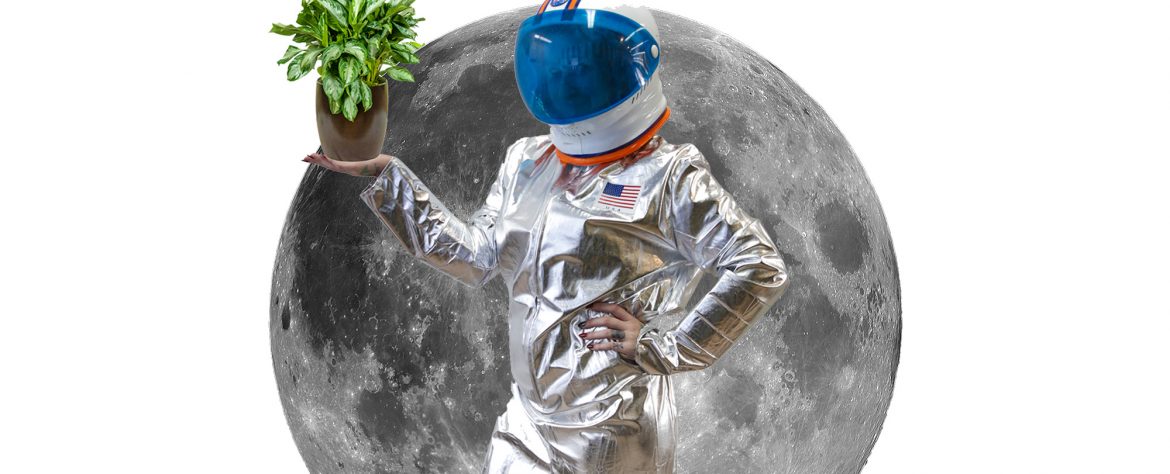What does your home have to do with a NASA spaceship? Indoor air pollutants for one. In 1998, NASA discovered “sick building syndrome” due to the astronauts experiencing symptoms of headaches, nausea, eye irritation, coughing, dry skin and the inability to focus because of being confined in a sealed space with little air flow. Stagnant air allowed pollutants to build up with contaminants causing the “sick building syndrome.” This study proved that houseplants can absorb harmful toxins and purifies the air in an enclosed space. It also showed that plants increase mood and productivity, enhances concentration and memory, and reduces stress. This is partly why office plants are so popular too; if productivity can be increased, companies will be more than happy to purchase from places like phsgreenleaf.co.uk for a plant in the office.
We all know that plants take in particulates from the air at the same time they take in carbon dioxide and is then processed into oxygen through photosynthesis. However, it has been proven that houseplants take in more pollutants then our outside plants. Why? Because most houseplants are tropical and therefore ultra-efficient at capturing light, which means they must be efficient in processing gasses for photosynthesis.
There are many things that contribute to our air quality. Furnishings, building materials, cleaning products, pollen, bacteria and molds, car exhaust, they all find their way into our environment. NASA studied and tested five chemicals that are found in our living space.
1. Formaldehyde: used in many building materials including particle board and cleaning products. It is also used to set the dye in our clothes.
2. Benzene: is a common solvent found in oils and paints.
3. Trichloroethylene: used in paints, adhesives, inks and varnishes.
4. Xylene: used in printing material, rubber and leather goods.
5. Ammonia: utilized in plastics, pesticides and dyes.
After conducting their study, NASA came up with a list of the most effective plants for treating indoor air pollution. It is important to know that if you have pets, you should check the ASPCA website at aspca.org/pet-care/animalpoison to insure that the houseplant you have chosen is not toxic to your pet. As you read the list, you will find that several of these plants are toxic to our furry family member. All these plants are low maintenance and do well in indirect light.
Spider Plant: non-toxic, eliminates formaldehyde and xylene
Dracaenas: toxic to animals, eliminates formaldehyde, xylene, toluene, benzene, trichloroethylene
Philodendron: toxic to animals, eliminates formaldehyde, xylene, toluene, benzene, carbon monoxide and much more. It is considered one of the most effective indoor air purifiers.
Boston Fern: non-toxic, eliminates formaldehyde and xylene
Snake Plant/Mother-in-law tongue: toxic to animals, eliminates benzene, formaldehyde, trichloroethylene, xylene
Aloe Vera: non-toxic, eliminates formaldehyde and is beneficial to healing wounds
Other plants that also purify the air around us are: Bamboo palms, English ivy, Rubber plant, Chinese evergreen, Peace lilies and Weeping fig.
So pick a plant, add a pot that adds pizzazz to your décor, and enjoy the benefits houseplants can contribute to — such as 34% fewer respiratory problems, 52% less eye irritation problems and 24% fewer headaches. Plus, you’ll have the enjoyment of the beauty of these living plants inside your home!


